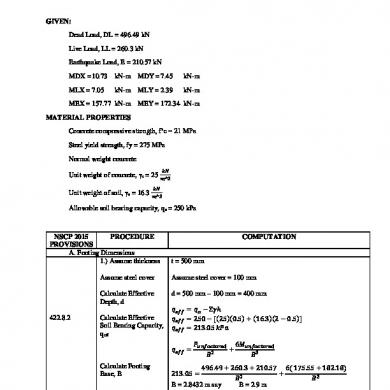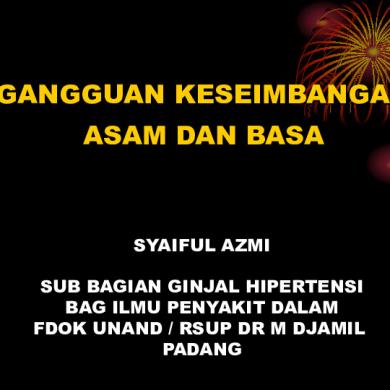22447_evs_ppt_uo 1a 1b 1c
This document was uploaded by user and they confirmed that they have the permission to share it. If you are author or own the copyright of this book, please report to us by using this DMCA report form. Report DMCA
Overview
Download & View 22447_evs_ppt_uo 1a 1b 1c as PDF for free.
More details
- Words: 1,288
- Pages: 16
Loading documents preview...
Program – CIVIL ENGINEERING Program Code – CE MSBTEs E-CONTENT
Expert-Dr. B. R. Ambade, LCE, G P Bramhapuri 06/07/2020 MSBTE LEAD- STUDY AT YOUR DOORSTEP
Course- ENVIRONMENTAL STUDIES Course Code – 22447 CO-a: Develop Public Awareness about Environment.
Unit Outcome- UO 1a,1b, and 1c MSBTE LEAD- STUDY AT YOUR DOORSTEP
Written by Br. B. R. Ambade Course Expert and Coordinator
Topic – 1 Environment
What we will learn today 1. Agenda point – Environment , its need and Scope. 2. Agenda point – Segments of Environment
Dr. B. R. Ambade
Understand about environment and its segments. Content 1.1 Definitions. need of environmental studies. 1.2 Segments of environmentAtmosphere, Hydrosphere Lithosphere, Biosphere.
Course Expert and Coordinator
Page 3
Maharashtra State Board of Technical Education
Sunday, November 08, 2020
Learning Objective/ Key learning
1a. Discuss the scope of environment. 1b. Describe various types of environment 1c. Describe the importance of environmental studies.
Dr. B. R. Ambade Course Expert and Coordinator
Page 4
Maharashtra State Board of Technical Education
Sunday, November 08, 2020
Concept Map of Environment
Page 5
Maharashtra State Board of Technical Education
Sunday, November 08, 2020
UNIT 1: ENVIRONMENT word environment is derived from the French verb ‘enviro’ which means ‘surrounding’. Thus, our environment can be defined as the physical, chemical and biological world that surround us. In Simple way the Environment is A place around us includes people, children, benches, ground, grass, trees, insects, birds, sunlight, air, land, water, mountain etc [2]. Biotic components constantly interact and exchange things with each other as well as with an A biotic components for their survival and existence [2; 4; 5].
Environment
The
Biotic Components Living Things e.g. People, Children, Trees, Grass, Plants, insects, Birds etc.
Abiotic Components NonLiving Things e.g. Play ground, Benches, Swings, Slide, Air, Water, Mountain etc.
Footnotes
Page 6
Maharashtra State Board of Technical Education
Sunday, November 08, 2020
Types of Environment Natural Environment The environment in its original form without the interference of human beings is known as natural environment. All living and nonliving things occurring naturally on earth Page 7
Man-made Environment The environment changed or modified by the interference of human beings is called man made environment. e.g., Infrastructure, Utilities, Institutions, housing, industries , parks, buildings, energy networks, transportations, etc
Social Environment Social Environment includes an individual’s social, economic and political condition wherein he lives. e.g., Customs, Traditions, ethics, Language, Culture, Professions, Living conditions etc
Maharashtra State Board of Technical Education
Psychological Environment Every individual has his own psychological environment, in which he lives. The Psychological environment enables us to understand the personality of an individual. Both the person and his goal from psychological environment
Sunday, November 08, 2020
STRUCTURE OF ENVIRONMENT : Physical Environment (i) Solid - The lithosphere (solid earth) : Soil / land and Mountain Environment (ii) Liquid - The hydrosphere (water component) : River, Reservoir, Oceans and Glacier Environment (iii) Gas - Various gases (oxygen, carbondioxide, nitrogen, méthane etc. present in atmosphere. Page 8
Maharashtra State Board of Technical Education
Biological Environment i) Plants (flora): trees, grass, shrubs etc. (ii) Animals (fauna) : domestic and wild animals, humans, birds, insects etc [2; 4].
Sunday, November 08, 2020
SCOPE OF ENVIRONMENTAL STUDIES This subject educates the students, citizens and experts to understand the complexity of environmental issues. Experts having knowledge in the environmental fields that enables them to facilitate the solution of environmental problems. The current trend of environmental degradation can be reversed if people of educated communities are organized and empowered. By knowing this subject we can develop eco-friendly new technologies for various developments which can save the natural resources as well as reduces environmental pollutions and public health impacts. As, the new earth is not discovered till now we have no other option except to maintain the ecological balance on the planet Earth so that the liveable environment should be kept for our future generations. The major areas in which the role of environmental scientists are of vital importance are natural resources, ecosystems, biodiversity and its conservation, environmental pollution, social issues , human population and environment [2; 4; 5].
Page 9
Maharashtra State Board of Technical Education
Sunday, November 08, 2020
NEED AND IMPORTANCE OF ENVIRONMENTAL STUDIES: • •
• • • • • • • •
Page 10
Public awareness. Environment issues being of international importance. Problems cropped in the wake of development. Conserve energy. For an alternative solution. Save species from extinction. Save the natural resources. Reduce the pollution. Wise planning of development. Sustainable development [2; 4; 5]
Maharashtra State Board of Technical Education
Sunday, November 08, 2020
SEGMENTS OF ENVIRONMENT ►
►
►
Page 11
The atmosphere is composed of nitrogen and oxygen. Besides, argon, carbon dioxide, and other trace gases.
Biosphere: Biosphere indicates the realm of living organisms and their interactions with environment, viz atmosphere, hydrosphere and lithosphere.
►
►
Lithosphere: Lithosphere is the outer mantle of the solid earth. It consists of minerals occurring in the earth’s crusts and the soil e.g. minerals, organic matter, air and water.
Maharashtra State Board of Technical Education
Hydrosphere: The Hydrosphere comprises all types of water resources oceans, seas, lakes, rivers, streams, reservoir, polar icecaps, glaciers, and ground water.
Sunday, November 08, 2020
SEGMENTS OF ENVIRONMENT Atmosphere: The atmosphere
implies the protective blanket of gases, surrounding the earth: (a) It sustains life on the earth. (b) It saves it from the hostile environment of outer space. (c) It absorbs most of the cosmic rays from outer space and a major portion of the electromagnetic radiation from the sun. (d) It transmits only here ultraviolet, visible, near infrared radiation (300 to 2500 nm) and radio waves. (0.14 to 40 m) while filtering out tissue-damaging ultra violate waves below about 300 nm [2; 4] Source: vectorstock.com
Page 12
Maharashtra State Board of Technical Education
Sunday, November 08, 2020
SEGMENTS OF ENVIRONMENT Hydrosphere: The Hydrosphere
comprises all types of water resources oceans, seas, lakes, rivers, streams, reservoir, polar icecaps, glaciers, and ground water. 71 % of earth area is covered by water. (i) Nature 97% of the earth’s water supply is in the oceans, (ii) About 2% of the water resources is locked in the polar icecaps and glaciers. (iii) Only about 1% is available as fresh surface water-rivers, lakes streams, and ground water fit to be used for human consumption and other uses. Lithosphere: Lithosphere is the outer mantle of the solid earth. It consists of minerals occurring in the earth’s crusts and the soil e.g. minerals, organic matter, air and water. Biosphere: Biosphere indicates the realm of living organisms and their interactions with environment, viz atmosphere, hydrosphere and lithosphere [2; 5].
Page 13
Maharashtra State Board of Technical Education
Sunday, November 08, 2020
Revision ►
What we have leaned today? Environment its definition and scope. ► Types of environment. ► Structure of environment. ► Needs and importance of environment. ► Segments of environment. Now let’s have a Quiz...... ►
Page 14
Maharashtra State Board of Technical Education
Sunday, November 08, 2020
References 1. 2. 3. 4. 5. 6.
Page 15
Dr Prabhu Prasadini and Dr G. Swarajya Lakshmi, ENVIRONMENTAL SCIENCE, BIRM 301 Study Material. Dr. Y. K. Singh, 2006. Environmental Science. NEW AGE INTERNATIONAL (P) LIMITED, PUBLISHERS, New Delhi, India. Rokonuzzaman M. S., 2014. Types of Environment, Department of Geology and Environment, Dhaka, Bangladesh. Prof. Erach Bharucha, 2004. Textbook for Environmental Studies. University Grants Commission, New Delhi. India. Michael Aaleby, 2000. Basics of Environmental science, 2nd Edition, Taylor & Francis Group, New York. www.vectorstock.com, Accessed on 02/07/2020.
Maharashtra State Board of Technical Education
Sunday, November 08, 2020
THANK YOU ALL
HAVE A NICE DAY
HAPPY LEARNING Page 16
Maharashtra State Board of Technical Education
Sunday, November 08, 2020
Expert-Dr. B. R. Ambade, LCE, G P Bramhapuri 06/07/2020 MSBTE LEAD- STUDY AT YOUR DOORSTEP
Course- ENVIRONMENTAL STUDIES Course Code – 22447 CO-a: Develop Public Awareness about Environment.
Unit Outcome- UO 1a,1b, and 1c MSBTE LEAD- STUDY AT YOUR DOORSTEP
Written by Br. B. R. Ambade Course Expert and Coordinator
Topic – 1 Environment
What we will learn today 1. Agenda point – Environment , its need and Scope. 2. Agenda point – Segments of Environment
Dr. B. R. Ambade
Understand about environment and its segments. Content 1.1 Definitions. need of environmental studies. 1.2 Segments of environmentAtmosphere, Hydrosphere Lithosphere, Biosphere.
Course Expert and Coordinator
Page 3
Maharashtra State Board of Technical Education
Sunday, November 08, 2020
Learning Objective/ Key learning
1a. Discuss the scope of environment. 1b. Describe various types of environment 1c. Describe the importance of environmental studies.
Dr. B. R. Ambade Course Expert and Coordinator
Page 4
Maharashtra State Board of Technical Education
Sunday, November 08, 2020
Concept Map of Environment
Page 5
Maharashtra State Board of Technical Education
Sunday, November 08, 2020
UNIT 1: ENVIRONMENT word environment is derived from the French verb ‘enviro’ which means ‘surrounding’. Thus, our environment can be defined as the physical, chemical and biological world that surround us. In Simple way the Environment is A place around us includes people, children, benches, ground, grass, trees, insects, birds, sunlight, air, land, water, mountain etc [2]. Biotic components constantly interact and exchange things with each other as well as with an A biotic components for their survival and existence [2; 4; 5].
Environment
The
Biotic Components Living Things e.g. People, Children, Trees, Grass, Plants, insects, Birds etc.
Abiotic Components NonLiving Things e.g. Play ground, Benches, Swings, Slide, Air, Water, Mountain etc.
Footnotes
Page 6
Maharashtra State Board of Technical Education
Sunday, November 08, 2020
Types of Environment Natural Environment The environment in its original form without the interference of human beings is known as natural environment. All living and nonliving things occurring naturally on earth Page 7
Man-made Environment The environment changed or modified by the interference of human beings is called man made environment. e.g., Infrastructure, Utilities, Institutions, housing, industries , parks, buildings, energy networks, transportations, etc
Social Environment Social Environment includes an individual’s social, economic and political condition wherein he lives. e.g., Customs, Traditions, ethics, Language, Culture, Professions, Living conditions etc
Maharashtra State Board of Technical Education
Psychological Environment Every individual has his own psychological environment, in which he lives. The Psychological environment enables us to understand the personality of an individual. Both the person and his goal from psychological environment
Sunday, November 08, 2020
STRUCTURE OF ENVIRONMENT : Physical Environment (i) Solid - The lithosphere (solid earth) : Soil / land and Mountain Environment (ii) Liquid - The hydrosphere (water component) : River, Reservoir, Oceans and Glacier Environment (iii) Gas - Various gases (oxygen, carbondioxide, nitrogen, méthane etc. present in atmosphere. Page 8
Maharashtra State Board of Technical Education
Biological Environment i) Plants (flora): trees, grass, shrubs etc. (ii) Animals (fauna) : domestic and wild animals, humans, birds, insects etc [2; 4].
Sunday, November 08, 2020
SCOPE OF ENVIRONMENTAL STUDIES This subject educates the students, citizens and experts to understand the complexity of environmental issues. Experts having knowledge in the environmental fields that enables them to facilitate the solution of environmental problems. The current trend of environmental degradation can be reversed if people of educated communities are organized and empowered. By knowing this subject we can develop eco-friendly new technologies for various developments which can save the natural resources as well as reduces environmental pollutions and public health impacts. As, the new earth is not discovered till now we have no other option except to maintain the ecological balance on the planet Earth so that the liveable environment should be kept for our future generations. The major areas in which the role of environmental scientists are of vital importance are natural resources, ecosystems, biodiversity and its conservation, environmental pollution, social issues , human population and environment [2; 4; 5].
Page 9
Maharashtra State Board of Technical Education
Sunday, November 08, 2020
NEED AND IMPORTANCE OF ENVIRONMENTAL STUDIES: • •
• • • • • • • •
Page 10
Public awareness. Environment issues being of international importance. Problems cropped in the wake of development. Conserve energy. For an alternative solution. Save species from extinction. Save the natural resources. Reduce the pollution. Wise planning of development. Sustainable development [2; 4; 5]
Maharashtra State Board of Technical Education
Sunday, November 08, 2020
SEGMENTS OF ENVIRONMENT ►
►
►
Page 11
The atmosphere is composed of nitrogen and oxygen. Besides, argon, carbon dioxide, and other trace gases.
Biosphere: Biosphere indicates the realm of living organisms and their interactions with environment, viz atmosphere, hydrosphere and lithosphere.
►
►
Lithosphere: Lithosphere is the outer mantle of the solid earth. It consists of minerals occurring in the earth’s crusts and the soil e.g. minerals, organic matter, air and water.
Maharashtra State Board of Technical Education
Hydrosphere: The Hydrosphere comprises all types of water resources oceans, seas, lakes, rivers, streams, reservoir, polar icecaps, glaciers, and ground water.
Sunday, November 08, 2020
SEGMENTS OF ENVIRONMENT Atmosphere: The atmosphere
implies the protective blanket of gases, surrounding the earth: (a) It sustains life on the earth. (b) It saves it from the hostile environment of outer space. (c) It absorbs most of the cosmic rays from outer space and a major portion of the electromagnetic radiation from the sun. (d) It transmits only here ultraviolet, visible, near infrared radiation (300 to 2500 nm) and radio waves. (0.14 to 40 m) while filtering out tissue-damaging ultra violate waves below about 300 nm [2; 4] Source: vectorstock.com
Page 12
Maharashtra State Board of Technical Education
Sunday, November 08, 2020
SEGMENTS OF ENVIRONMENT Hydrosphere: The Hydrosphere
comprises all types of water resources oceans, seas, lakes, rivers, streams, reservoir, polar icecaps, glaciers, and ground water. 71 % of earth area is covered by water. (i) Nature 97% of the earth’s water supply is in the oceans, (ii) About 2% of the water resources is locked in the polar icecaps and glaciers. (iii) Only about 1% is available as fresh surface water-rivers, lakes streams, and ground water fit to be used for human consumption and other uses. Lithosphere: Lithosphere is the outer mantle of the solid earth. It consists of minerals occurring in the earth’s crusts and the soil e.g. minerals, organic matter, air and water. Biosphere: Biosphere indicates the realm of living organisms and their interactions with environment, viz atmosphere, hydrosphere and lithosphere [2; 5].
Page 13
Maharashtra State Board of Technical Education
Sunday, November 08, 2020
Revision ►
What we have leaned today? Environment its definition and scope. ► Types of environment. ► Structure of environment. ► Needs and importance of environment. ► Segments of environment. Now let’s have a Quiz...... ►
Page 14
Maharashtra State Board of Technical Education
Sunday, November 08, 2020
References 1. 2. 3. 4. 5. 6.
Page 15
Dr Prabhu Prasadini and Dr G. Swarajya Lakshmi, ENVIRONMENTAL SCIENCE, BIRM 301 Study Material. Dr. Y. K. Singh, 2006. Environmental Science. NEW AGE INTERNATIONAL (P) LIMITED, PUBLISHERS, New Delhi, India. Rokonuzzaman M. S., 2014. Types of Environment, Department of Geology and Environment, Dhaka, Bangladesh. Prof. Erach Bharucha, 2004. Textbook for Environmental Studies. University Grants Commission, New Delhi. India. Michael Aaleby, 2000. Basics of Environmental science, 2nd Edition, Taylor & Francis Group, New York. www.vectorstock.com, Accessed on 02/07/2020.
Maharashtra State Board of Technical Education
Sunday, November 08, 2020
THANK YOU ALL
HAVE A NICE DAY
HAPPY LEARNING Page 16
Maharashtra State Board of Technical Education
Sunday, November 08, 2020
Related Documents

22447_evs_ppt_uo 1a 1b 1c
February 2021 0
Manual Motor Toyota 1c 1c-t 2c.pdf
February 2021 0
Footing 1b
January 2021 1
Accounting 1a
February 2021 0
Chapter 1a
March 2021 0
1b Grammar Simple Present
February 2021 0More Documents from "Kathia Ramirez"

22447_evs_assessments _co1_all Uos
February 2021 2
22447_evs_ppt_uo 1d 1e
February 2021 0
22447_evs_ppt_uo 1a 1b 1c
February 2021 0
22447_evs_ppt_uo 1e
February 2021 2
218341361-case-law-digest-on-will-and-probate.pdf
January 2021 0